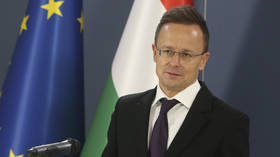Leveling up? While Moscow remains way ahead of most other cities, inequality between capital & Russian regions slowly shrinking

For two decades it used to be said that there were two Russias: Moscow and everywhere else. The difference between the quality of life in Russia’s capital and most of the other 84 (often far-flung) regions was sometimes enormous.
In 2020, living standards in most Russian regions remain practically unchanged, according to a survey carried out by state-owned news agency RIA Novosti.
The rating found that the best places to live, as in the previous year, remain Moscow, St. Petersburg, and the Moscow Region, which is no surprise: They have scores of around 80,000 out of a possible total index score of 85,000.
In the second tier, with scores of over 60,000, are many familiar names, led by Kazan in the Republic of Tatarstan, Belgorod near the Ukrainian border, Krasnodar in the balmy southern part of the country, the Leningrad Region that surrounds St. Petersburg, and the agricultural powerhouse of Voronezh in the Black Earth Regions. The oil-rich West Siberian Khanty-Mansi Autonomous Okrug is listed as the only comfortable region that is not in the European part of Russia.
Some parts of the Far East, most notably Sakhalin and Magadan, are known for their relatively high salaries, but the harsh local climates and poor infrastructure drag down their totals.
Also on rt.com A new & unprecedented problem for Russia’s middle class as country’s economy has become ‘too normal’ for simple investorsRight at the very bottom of the list are the regions in very depths of Russia grouped around Lake Baikal – although Irkutsk, the capital of the Siberian region, is a lot better off, ranked 55th on the list with a score of 41,786.
The other areas in this neck of the woods are far poorer. Tuva, the Altai Republic, Transbaikal, and the Republic of Buryatia near the Mongolian border all have scores of under 30,000 and are the most destitute in the Federation. The Jewish Autonomous Region in Russia’s Far Eastern interior also stands out as especially poor, with a score of 28,118 - it used to be a favourite end station for internal exiles.
The next group up from the bottom of the ranking contains several regions from the Caucuses, of which the Karachay-Cherkess Republic is the very poorest with a score of 27,693, according to RIA Novosti. But the group of regions with a score between 30,000 and 40,000 are scattered over the hinterland east of the Ural Mountains. Chechnya is also in this group but fares better than many of its neighbours, ranked 74th with a score of 36,754.
It’s important to note that Russian financial statistics are often better interpreted as a guide to trends, rather than the gospel truth. Credible estimates suggest the size of the black economy in the country may be as high as 45 percent. Of course, that means real income levels are obviously considerably higher than official data suggests, on average. However, the ‘fruits’ are likely distributed disproportionately towards the better off.
Internal migration
The old duality of “good in Moscow, bad elsewhere” doesn't work as well as it used to. After three decades, many of the regions have been investing in local infrastructure, and services and the standard of living have improved dramatically.
Also on rt.com New Russian invasion? Coronavirus fallout fuels domestic e-commerce boom, with companies poised to expand across EuropeOther regions offer a much easier life due to their climate. On a trip to Norilsk on the coast in Russia’s Far North, local pensioners told bne IntelliNews that their dream was to buy a small dacha in Bryansk on the Ukrainian border, as the weather was pleasant and they could live almost all year round the produce from the garden.
Incomes in the capital remain as much as six times higher than in the Caucuses and are on a par with most western European cities, but the cost of living is also extremely high. In somewhere like Bryansk, the cost of living is so low that residents have comfortable lives with much less, evening out the pay difference gradient.
But income inequality remains a major problem, as does the differential in wages between cities in the European part of the country (to the west of the Ural Mountains) and those in the rest of the country. However, things are starting to change.
As bne IntelliNews reported two years ago, the average wages in most of Russia’s regions remain well behind the national average, but the wage distribution is distorted by the high salaries in resource production mono-cities in deep interior of the country. In a 2018 regional wage survey, three regions – Chukotka, Yamalo-Nenets and Nenets – all had higher average wages than Moscow. The latter two regions are both huge but remote gas-producing regions, and the reason why Chukotka’s average wage was so high was because oligarch Roman Abramovich was a registered resident and paid his income tax there.
These cities are mostly raw material producers with no connection to the road or rail networks, and so they have to have everything flown in. The wages are high, but so is the cost of living.
Also on rt.com Throwing in the trowel: As construction demand booms, Russia short 1.2mn builders after migrants left during Covid pandemicNet-net, the quality of life in some of the regional cities has risen to the point where they are starting to compete with Moscow and seeing reverse migration.
The cities of Sochi and Krasnodar, to name two prominent examples, have seen their populations explode dramatically in recent years and are experiencing reverse migration – particularly by families with small children. The basic services of schools, hospitals, and affordable housing mean life is more pleasant than in the megalopolis of Moscow, and with firms increasingly moving production into regional cities where the costs are lower, there is plenty of work. Kazan, for example, has become the call-centre hub for the whole of the Federation. Similarly, the rapid growth of e-commerce has been driving a groundswell of light industry manufactures catering to the domestic consumer market, after rising incomes in China have started to price its consumer goods out of the market in comparison to cheaper Russian alternatives.
About a third of Russia’s regions are now prospering and have been helped by the government’s policy of heavy investment into regional infrastructure development.
The Sochi Olympics were widely derided as the “most expensive Olympics in history” after the government poured some $50 billion into the preparations for the games – about ten times more than is usually invested by the host country. But what critics missed is that the bill was not so high because of all the stealing (although there was plenty of that), but because the city’s entire infrastructure was overhauled: new airports, conference centres, modern housing, power, and sewage – everything was upgraded. And the population of Sochi has more than doubled since.
The decision to host the World Cup was more of the same, except another 11 key region cities got the same treatment, and they all feature well in the RIA Novosti ranking.
Also on rt.com Russia's population decline accelerated in 2020, losing 500,000 residents amid Covid deaths, falling birth rate & less immigrationIn parallel with the state investment is the growing inter-regional competition for domestic investment. A few regions, like Kaluga, invested very heavily in setting up industrial parks, and attracted big investments from domestic investors as a result. Kaluga became the ’Detroit of Russia’, attracting most of the main car manufacturers from a standing start with its fully developed ‘plug and play’ $1 billion industrial park.
Elections and the fall in popularity of the ruling United Russia party have helped, too. The Kremlin has increasingly been forced to turn to the regional governors to help bring in the vote, as the centre is powerless to sway the vote in the regions by itself. That has meant giving regional governors the money to make investments in local infrastructure and services, which has seen their popularity soar: last year Russia’s regional governors briefly saw their popularity overtake that of Russian President Vladimir Putin, who has enjoyed a 65 percent approval rating for pretty much all of his career as president.
The bottom line is, life is still hard in Russia’s frozen interior. The World Bank has recommended several times that these cities and towns simply be closed down and the people relocated to the nicer parts of Russia, as many of these settlements no longer make economic sense. What stops it from happening is that the value of an apartment in Norilsk is so low, the locals can’t raise enough money to buy a dacha in Bryansk. The local pensioners are trapped by the property price differential. Younger people don't have this problem, and so the interior is depopulating slowly, but it will take several generations for the rebalancing process to be complete.
Think your friends would be interested? Share this story!
The statements, views and opinions expressed in this column are solely those of the author and do not necessarily represent those of RT.
The statements, views and opinions expressed in this column are solely those of the author and do not necessarily represent those of RT.














